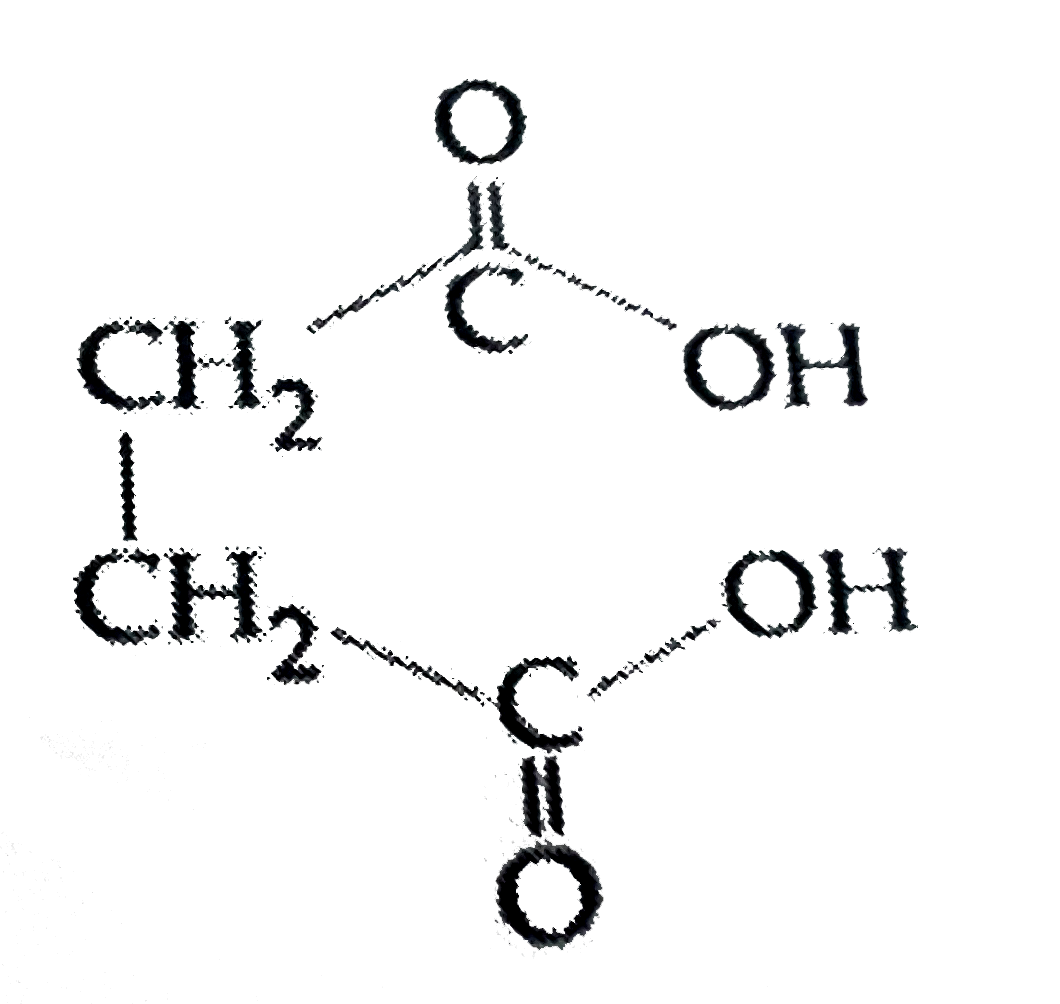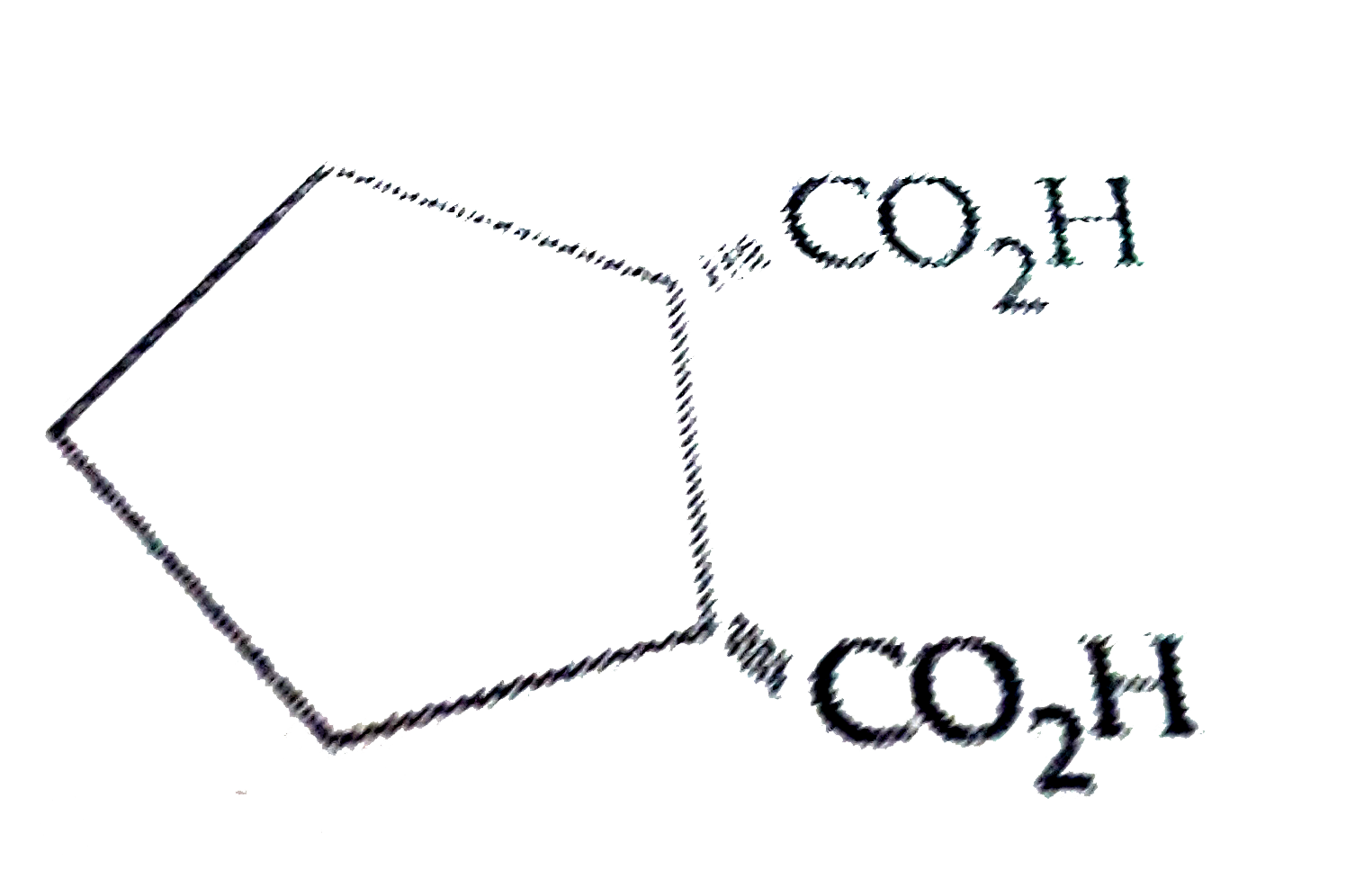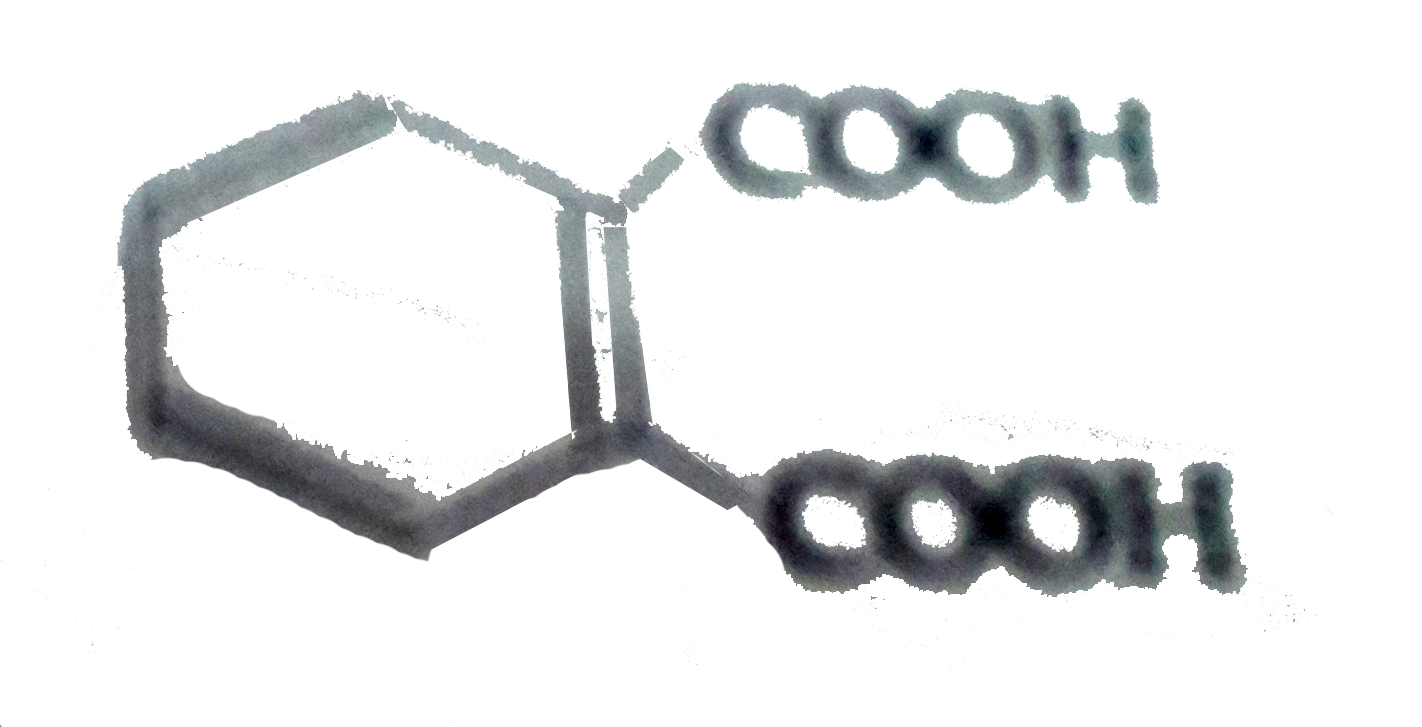Which dicarboxylic acid in presence of a dehydrating agent is least reactive to give an anhydride ?




To determine which dicarboxylic acid is least reactive in the presence of a dehydrating agent to form an anhydride, we need to analyze the structure of each dicarboxylic acid and the stability of the resulting anhydride.
1. Identify the Dicarboxylic Acids:
We have four options (A, B, C, D) which are dicarboxylic acids. Let's denote them as follows:
- Option A: Dicarboxylic acid with a longer carbon chain.
- Option B: Dicarboxylic acid with a 5-membered ring structure.
- Option C: Another dicarboxylic acid with a similar structure to B.
- Option D: A dicarboxylic acid that can also form a 5-membered ring.
2. Understanding the Role of the Dehydrating Agent:
A dehydrating agent removes a water molecule (H2O) from the dicarboxylic acid, facilitating the formation of an anhydride. The reaction involves the removal of one hydroxyl group (–OH) from one carboxylic acid and a hydrogen atom (–H) from another.
3. Analyze the Products:
- For Option D: Removing water leads to a stable 5-membered ring anhydride.
- For Option C: Similar to D, it also forms a stable 5-membered ring anhydride.
- For Option B: Again, a 5-membered ring is formed, which is stable.
- For Option A: Removing water from this dicarboxylic acid leads to a 7-membered ring anhydride.
4. Evaluate Stability:
- 5-Membered Rings: The anhydrides formed from options B, C, and D are stable due to their smaller ring size, which allows for less angle strain.
- 7-Membered Ring: The anhydride formed from option A is a 7-membered ring, which is less stable due to angle strain. This instability makes it less reactive towards forming an anhydride compared to the others.
5. Conclusion:
Since option A forms a less stable 7-membered ring anhydride, it is the least reactive dicarboxylic acid in the presence of a dehydrating agent. Therefore, the answer is:
- Option A.
We have four options (A, B, C, D) which are dicarboxylic acids. Let's denote them as follows:
- Option A: Dicarboxylic acid with a longer carbon chain.
- Option B: Dicarboxylic acid with a 5-membered ring structure.
- Option C: Another dicarboxylic acid with a similar structure to B.
- Option D: A dicarboxylic acid that can also form a 5-membered ring.
A dehydrating agent removes a water molecule (H2O) from the dicarboxylic acid, facilitating the formation of an anhydride. The reaction involves the removal of one hydroxyl group (–OH) from one carboxylic acid and a hydrogen atom (–H) from another.
- For Option D: Removing water leads to a stable 5-membered ring anhydride.
- For Option C: Similar to D, it also forms a stable 5-membered ring anhydride.
- For Option B: Again, a 5-membered ring is formed, which is stable.
- For Option A: Removing water from this dicarboxylic acid leads to a 7-membered ring anhydride.
- 5-Membered Rings: The anhydrides formed from options B, C, and D are stable due to their smaller ring size, which allows for less angle strain.
- 7-Membered Ring: The anhydride formed from option A is a 7-membered ring, which is less stable due to angle strain. This instability makes it less reactive towards forming an anhydride compared to the others.
Since option A forms a less stable 7-membered ring anhydride, it is the least reactive dicarboxylic acid in the presence of a dehydrating agent. Therefore, the answer is:
- Option A.
Topper's Solved these Questions
Similar Questions
Knowledge Check
Which of the following alkenes is least reactive towards anionic polymerisation ?
Aa. CH2=CHCH3Bb. CH2=CF2Cc. CH2=CHCNDd. CH2=CHC6H5
Which property of sulphuric acid accounts for its use as a dehydrating agent ?
View SolutionThe normal dehydrating agent, which used in a laboratories:-
View SolutionWhich of the following is least reactive towards SN2 mechanism ?
View SolutionWhich of the following is least reactive towards SN1?
View SolutionGive at least one example to explain the following properties.
(a) Sulphuric acid is a dibasic acid.
(b) Sulphuric acid is a dehydrating agent.
(c) Sulphuric acid is an oxidising agent.
View SolutionWhich one of the following compounds is least reactive with water?
View SolutionWhich one of the following compounds is least reactive with water?
View Solution
